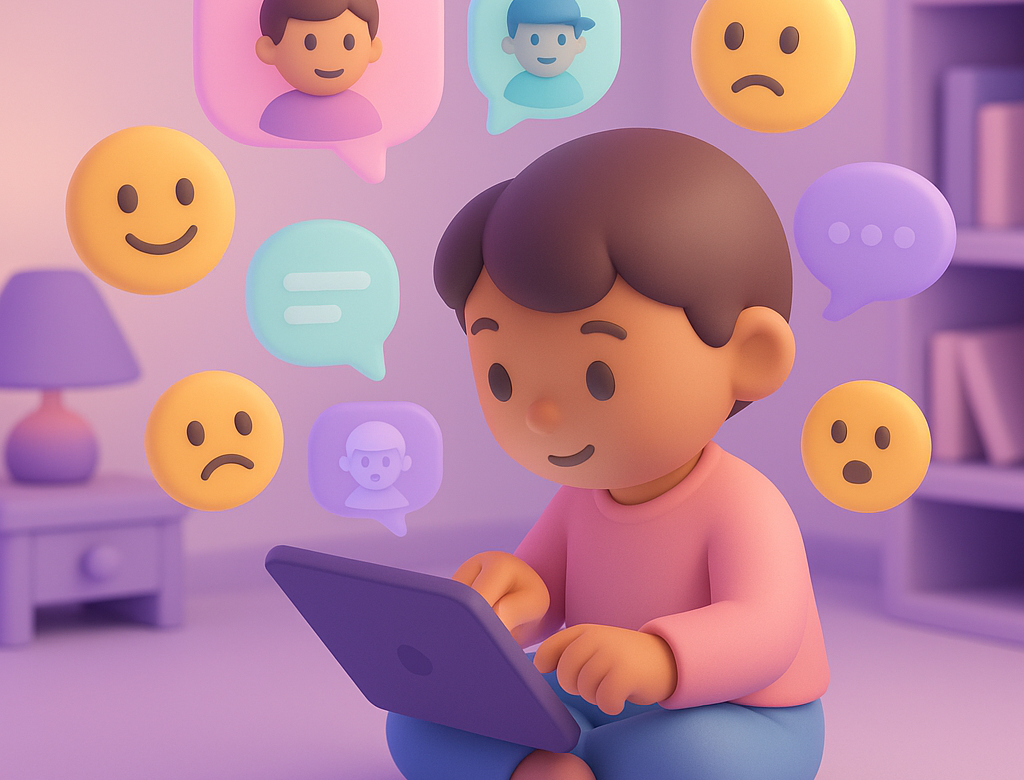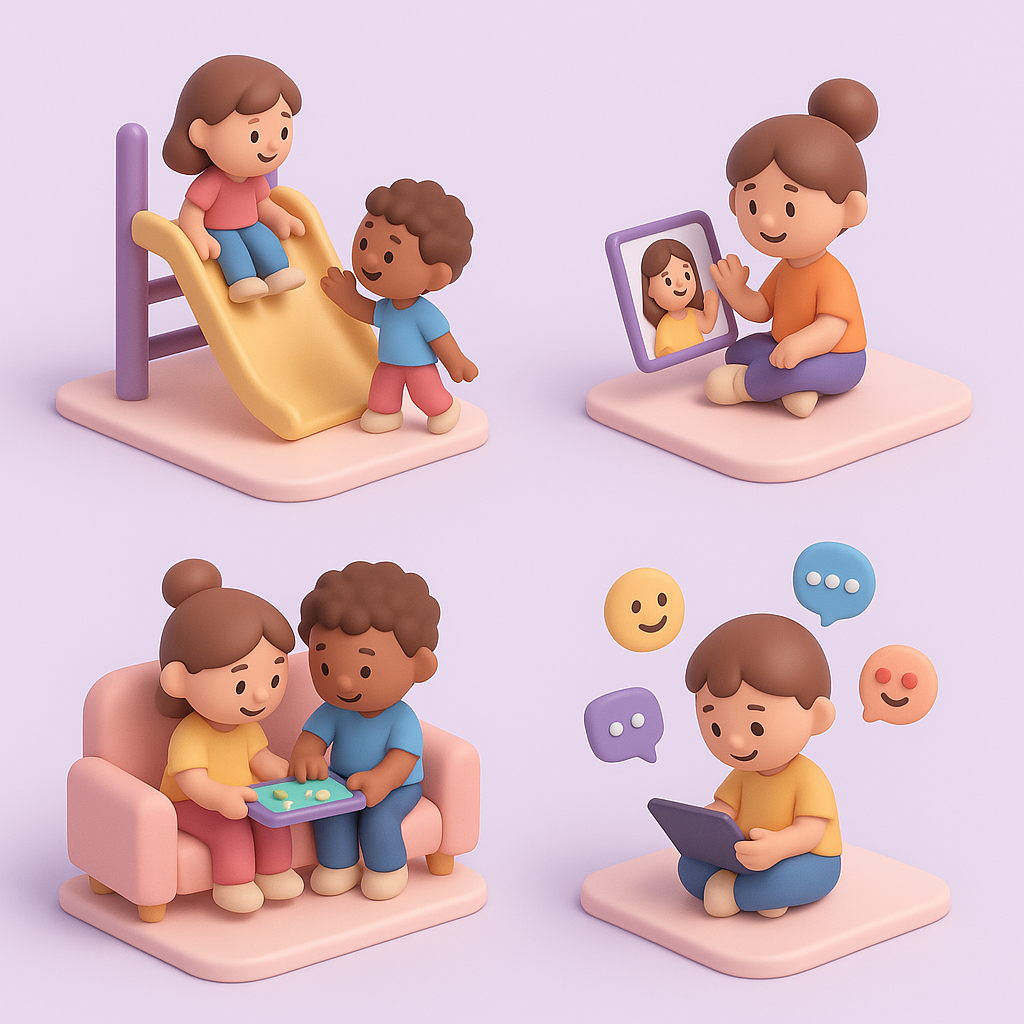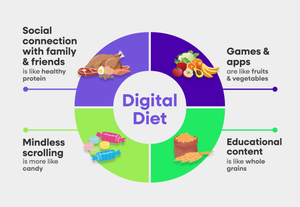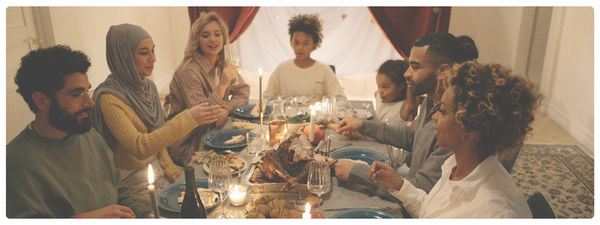Friendship doesn’t look the same as it did a generation ago. For today’s kids, social connection flows fluidly between offline and online spaces.
A friend might be someone they sit next to at school. A friend might be someone they build with in Minecraft. Or that friend might be the same person. As screens become part of everyday play, it’s natural for caregivers to feel uncertain.
But are our kids’ digital connections helping or hurting their child’s ability to make friends in non-digital spaces?
There’s a long-standing — and misguided — belief that friendships formed online are somehow less than. That they offer less value, less emotional depth, or fewer developmental benefits. But research debunks this idea across the board.
Online friends are real friends!
Online friendships are not inherently less meaningful. And even when those friendships remain entirely online, they can still provide kids with a strong sense of belonging, social support, and opportunities to practice emotional and interpersonal skills.
This is especially true when digital friendships mirror or complement offline ones. Kids might spend time with peers at school during the day, then continue those social connections online after dinner — chatting, playing, or collaborating in a shared game world. Throughout the day, they might engage with the digital avatars of kids they know in person, cousins they rarely see, or siblings sitting in the same room.
What’s important to remember is that play has always been the foundation of friendship. It’s through play that kids learn to take turns, navigate conflict, show empathy, and build trust. That hasn’t changed — the format just looks different. What used to be marbles on the playground or make-believe in the living room might now be a shared quest in a cooperative game.
Today’s kids are still bonding through play. The play is just more likely to be digital.
As caregivers, our role isn’t to fear these new spaces, but to guide our children within them, just as we would on a physical playground. When done intentionally, age-appropriately, and with curiosity, digital play can be a powerful space for social growth.
Let’s explore how.
Digital Play Builds Social Skills
Play has always been how kids learn to relate to others, and digital play is no exception. Whether they’re teaming up in a game, solving a puzzle with a sibling, or navigating a virtual world on their own, children are constantly picking up emotional cues, practicing perspective-taking, and exploring various ways to interact.
These digital environments offer unique value. They give kids access to more models of behavior than they’d encounter offline. They allow for playful exploration of emotions — often through characters or avatars that provide just enough distance to make those feelings easier to understand.
And they make social connection more accessible, especially for kids who are shy, anxious, or separated from friends and family.
Yes, there are limits. Nonverbal cues are harder to read online. And sometimes the line between real connection and parasocial relationships. But overall, digital play can create a rich space for social development, predominantly when guided by caregivers who understand how these interactions work.
Practicing Turn-Taking, Empathy & Emotion Regulation
Digital games can be powerful rehearsal spaces. With lower stakes and built-in flexibility, kids have the chance to safely try out key social behaviors and learn from the feedback they get.
In a multiplayer game, they might learn to wait their turn, share a win, or show care when a teammate makes a mistake. A basic chat feature might spark a moment of encouragement or humor. Even watching how others express frustration, excitement, or disappointment can teach kids something about emotional expression and regulation.
Games also make social interaction easier for some kids. There’s always a topic to talk about (the game itself), and plenty of built-in “outs” — like going AFK (away from keyboard) or opening an inventory — that offer a break if the interaction becomes overwhelming. That kind of grace gives kids the confidence to engage, reflect, and try again.
Screen Time Reinforces Social Skills
One of the biggest misconceptions about digital play is that it somehow damages a child’s ability to socialize. But research — and experience — says otherwise. Kids who play games are no less socially skilled or socially connected than kids who don’t. In fact, many are learning skills that are essential in today’s world.
Games help reinforce traditional social skills like cooperation, listening, and conflict resolution, especially when caregivers stay involved. Asking social-focused post-play questions (“Who did you play with?” “What made a good teammate?”) helps reinforce what’s been learned and brings the experience back into the offline world.

More than that, digital spaces can teach newer forms of communication that kids won’t learn face-to-face. Multi-threaded conversations, reading tone through text, adapting communication styles in a group — these are 21st-century social skills. And digital play is one of the few places where young kids get to practice them early.
The Caregiver’s Role: Coaching, Co-Playing, and Context
Even in digital spaces, caregivers remain the most powerful influence on a child’s social and emotional growth. Kids don’t just absorb social skills by osmosis, they learn through modeling, guidance, and conversation. That’s where the original “3 Cs” from our screen time framework come in: Content, Context, and Communication.
- Content is what they’re interacting with
- Context is how and with whom they’re experiencing it
- Communication is what we talk about before, during, and after
When it comes to supporting social development, these 3 Cs matter just as much, but they take on new dimensions. It’s not just about what your child is watching or playing. It’s about how those digital moments become opportunities to practice empathy, build friendships, and reflect on social behavior.
Caregivers can play an active “coaching” role in this process as well by shifting from monitor to mentor. That doesn’t mean hovering. It means looking for small moments to connect and support.
Here are a few practical ways to do that:
- Model empathy and problem-solving: “It's great to celebrate wins, but I think it made your brother feel worse. What should you do?”
- Narrate what’s happening on screen: “Hey, I noticed you waited your turn. That was really thoughtful.”
- Ask reflective post-play questions: “What did your teammate do that made you feel good?” or “Did anyone have a hard moment — how did the group handle it?”
- Help interpret digital social cues: “What do you think they meant by that emoji?” or “Why do you think they stopped replying?”
Even if you’re not playing alongside them, your interest matters. Kids pick up on what adults value and when we show that we care about kindness, cooperation, and connection on screen, they’re more likely to carry those values with them off screen, too.
Not All Digital Play is Social, And It Doesn’t Need to Be
It’s important to make a distinction: not all screen time is social time. Watching a show is different from teaming up in a game or chatting with a friend on video. But even if an activity is not inherently social, that does not mean it is without value or that it needs to be replaced.
For example, solo digital play supports a range of developmental goals, like self-regulation, creativity, and independent problem-solving. A child building quietly in a sandbox-style game is still exploring ideas, making choices, and expressing themselves — even if they’re not directly interacting with anyone else in that moment. And often, these solo moments become social later, as kids talk about their creations, share achievements, or ask someone to watch or join next time.
Caregivers often ask how they can tell if a digital activity supports social growth. Think about the social outcome. Ask:
- “Did you play with anyone?”
- “What did you notice about how people acted in the game?”
- “Was there a moment that felt really fun — or really frustrating?”
If there’s space for those kinds of reflections, there’s likely something social worth noticing.
However, it does not really matter What matters most isn’t whether every minute is maximized for social output — but rather that it’s that your child’s digital experiences are balanced, intentional, and sometimes, simply joyful. There’s no one-size-fits-all formula. Some kids thrive on co-play, others recharge through solo exploration. Balance and variety matter more than perfection.
Speaking of “simply joyful”, it is important to remember that sometimes we all just need a little break from our day-to-day (kid, too!), and digital play can also serve as a healthy form of escape. When kids experience built-in breaks from school, peer stress, or big emotions, intentional game moments can support emotion regulation, mood recovery, and adaptive coping. Well-chosen games offer calming routines, relief from negative moods, and a low-stakes environment to reset and recharge. 
The APA reminds us that unsupervised, unstructured screen use (without reflection or support) can be linked to emotional difficulties, which may inadvertently feed more screen reliance. The difference lies in intention. When caregivers help frame digital play as a conscious tool — for reset, regulation, or reconnection — it can become a healthy buffer rather than a distraction loop.
Friendship Is Bigger Than the Medium: Encouraging All Kinds of Connection
Today’s kids build relationships across many settings — on the playground, during a video chat, through a shared game, or inside a favorite app. These experiences may look different from the ones caregivers grew up with, but they’re still deeply social. What matters most isn’t how kids connect, it’s that they connect, and that they feel seen, supported, and emotionally engaged when they do.

Digital play and in-person play aren’t at odds. In fact, they often feed into one another. A child might meet a new classmate at recess, then grow closer to them through online co-play after school. Or they might build a virtual world on their tablet and later try to re-create it in real life, with blocks, cardboard, or sidewalk chalk. These bridges between platforms — online to offline and back again — are not just normal, they’re developmentally meaningful.
This kind of fluid movement between contexts is known as modality switching, and it’s common among children and adults alike. Research shows that relationships that move across modalities — from digital to in-person and vice versa — often feel more authentic, emotionally rich, and rewarding than those that stay in just one space.
We’ve also seen how hybrid play environments can spark spontaneous social connection. One powerful example came during the height of the Pokémon Go craze, when thousands of players converged in Central Park to catch rare creatures together. In those moments, a mobile game became a catalyst for face-to-face interaction, laughter, cooperation, and community building.
As caregivers, we can help kids make the most of both worlds. That might mean:
- Using tech to stay in touch with far-off cousins or school friends
- Encouraging “digital playdates” through co-op games or creative apps
- Bridging online and offline: “You loved building that tower in the app — want to try it with blocks next?”
The format may be different, but the goal is the same: connection, empathy, and growth. When we focus less on the platform and more on the quality of interaction, we open up new ways for our kids to thrive socially — wherever their friendships begin.






 Copy Link
Copy Link
 Share
to X
Share
to X
 Share
to Facebook
Share
to Facebook
 Share
to LinkedIn
Share
to LinkedIn
 Share
on Email
Share
on Email




